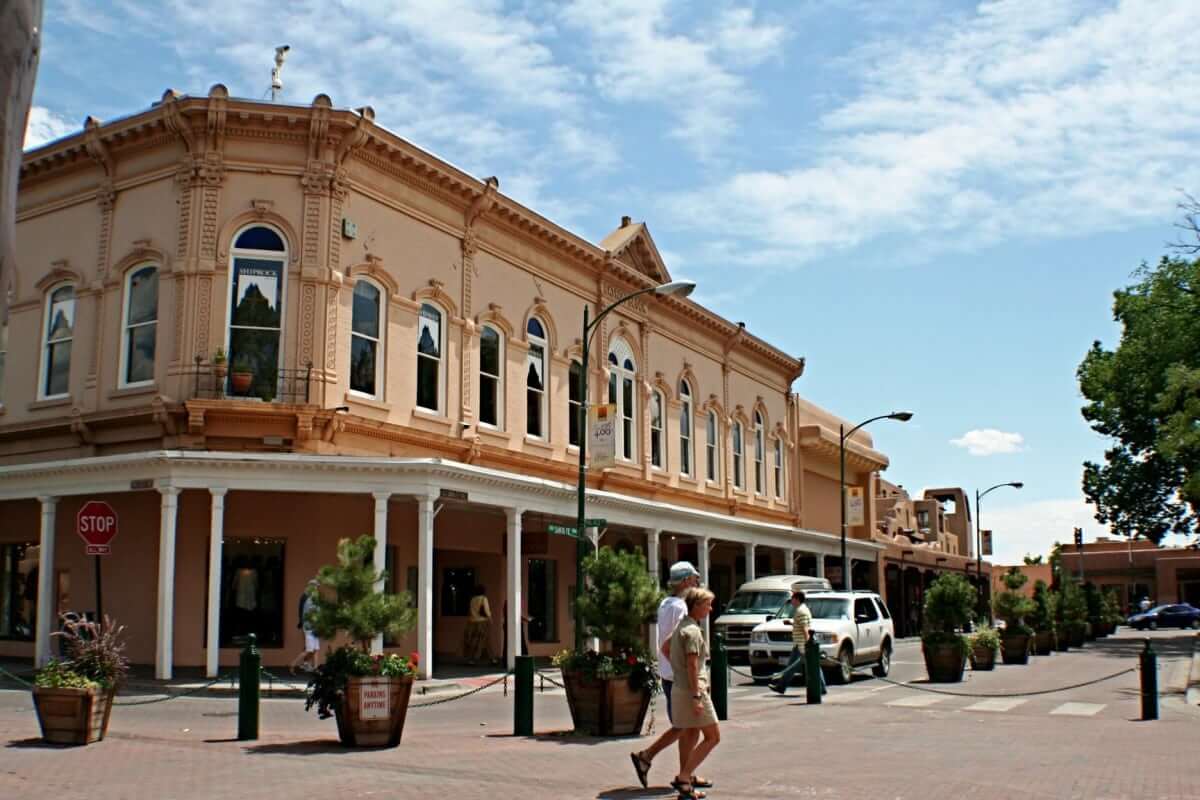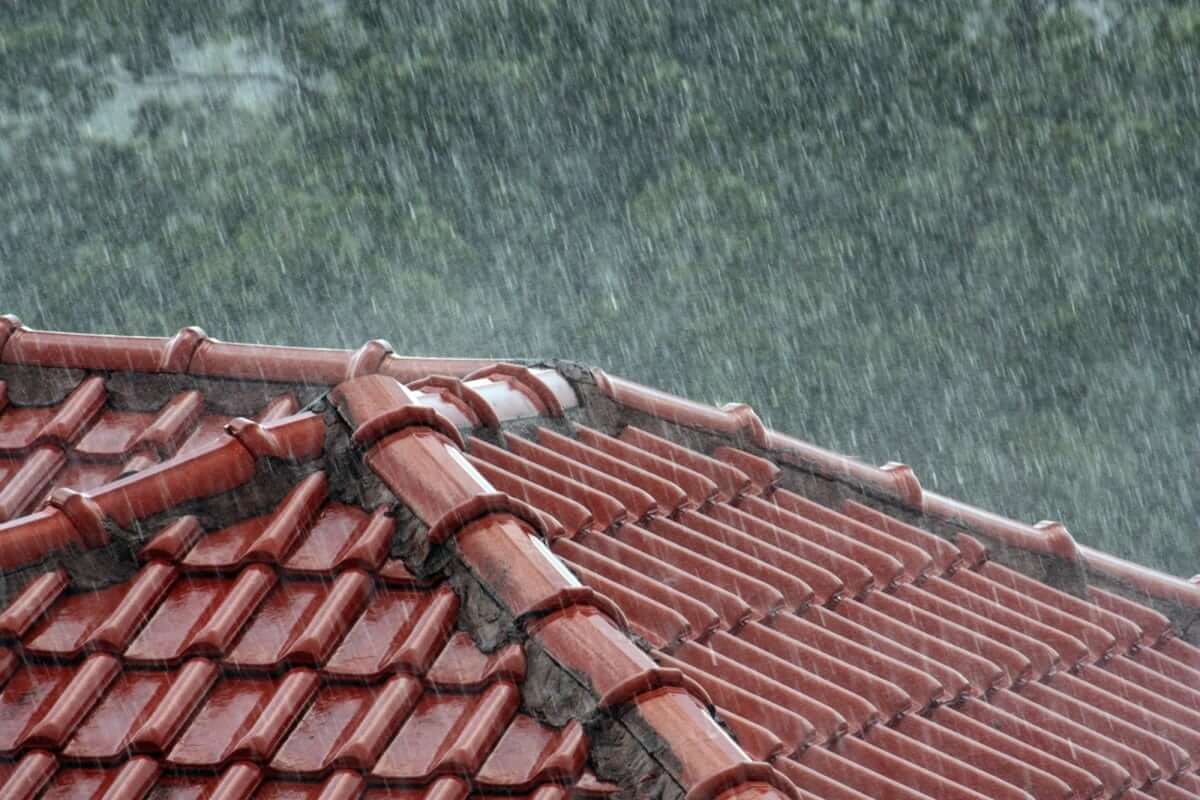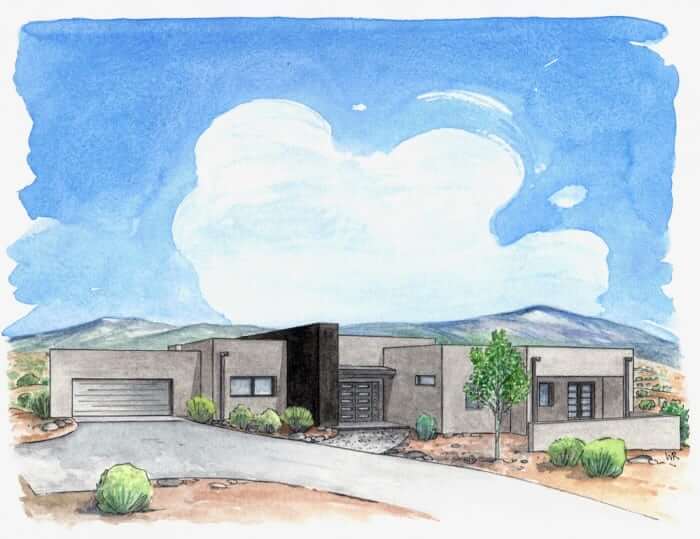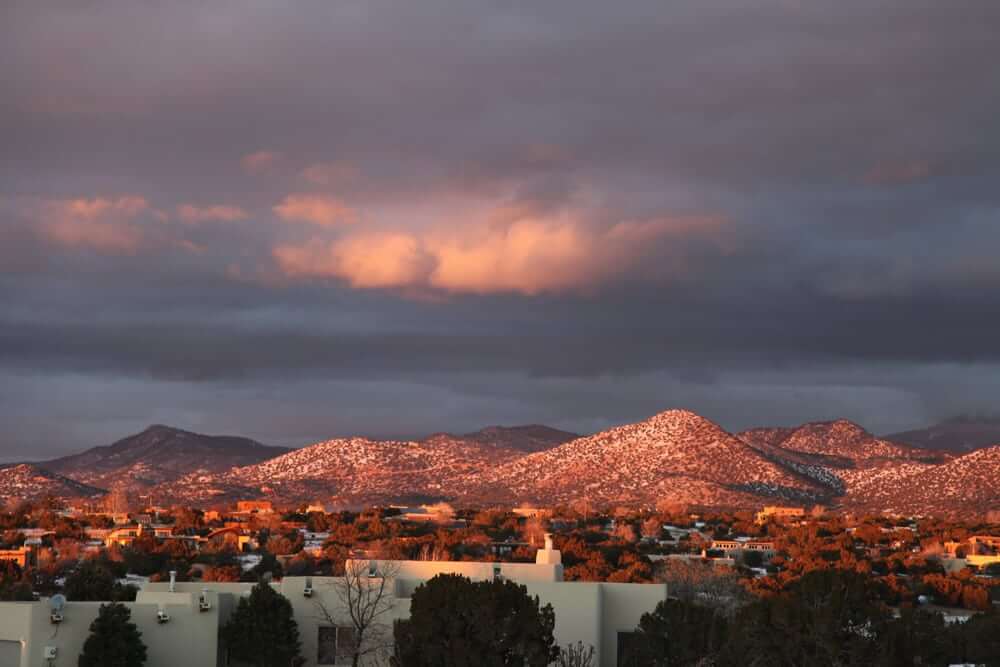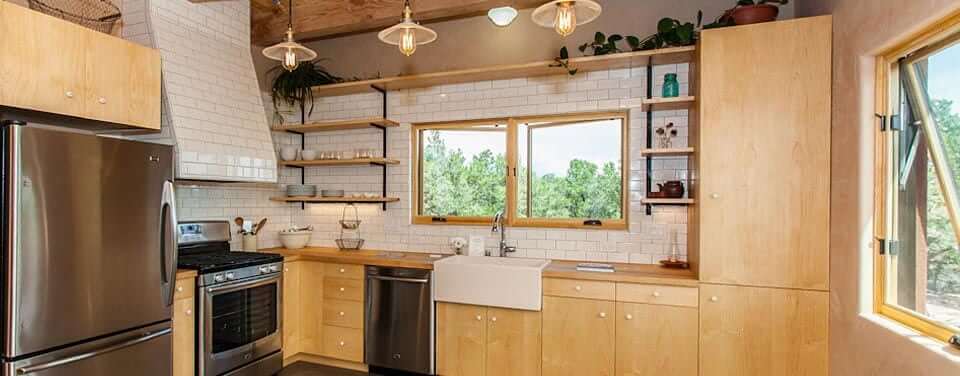Is Santa Fe a Good Place to Live?
Santa Fe is a desirable location to settle because of the rich culture, great population size of around 83,000, jaw-dropping scenery around the city, and delicious cuisine throughout the area.
There’s a reason they call us “The City Different”: life’s a little different here.
Whatever it is that makes Santa Fe different, we’re truly living in the gem of the desert. Here are 9 things to know about moving to Santa Fe:
1) The Altitude of Santa Fe
Santa Fe sits at an elevation of 7,198 feet, making it the third highest city in America. Only Leadville, Colorado and Mammoth Lakes, California have higher elevations than Santa Fe (not counting towns with fewer than 1,000 people) – and both those cities have significantly lower populations than Santa Fe.
To put that altitude in perspective, the “Mile High City” of Denver sits at just 5280 feet – and residents of that city love to complain about altitude sickness.
In any case, the altitude of Santa Fe means the air will be thinner and drier. [fusion_builder_container hundred_percent=”yes” overflow=”visible”][fusion_builder_row][fusion_builder_column type=”1_1″ background_position=”left top” background_color=”” border_size=”” border_color=”” border_style=”solid” spacing=”yes” background_image=”” background_repeat=”no-repeat” padding=”” margin_top=”0px” margin_bottom=”0px” class=”” id=”” animation_type=”” animation_speed=”0.3″ animation_direction=”left” hide_on_mobile=”no” center_content=”no” min_height=”none”][The altitude also means cooler temperatures. Although we are firmly situated in the arid southwest, The climate in Santa Fe is nothing like that of Phoenix or Las Vegas. Average temperatures in the summer months are in the mid-80’s with temperatures rarely getting above the mid 90’s. Cool dry air in the evenings means summer time lows in the high 50 to mid 60’s] If you’re used to living at sea level, then you may need a few days to adjust. However, don’t get too worried about the altitude: Santa Fe is nowhere close to the highest cities in the world, and millions of people safely live at altitudes higher than Santa Fe with no problem. Visitors will talk about the altitude far more than locals. It’s something you don’t really think about after living here for a little while.
2) We Take Pride in Santa Fe’s Cultural Heritage
Santa Fe is one of America’s most cultural cities. First, we inspired one of our country’s best-known artists, Georgia O’Keeffe, which is why we’re now home to the world-famous Georgia O’Keeffe Museum.
Santa Fe is also home to other cultural mainstays like the Santa Fe Opera (which is world famous), the Santa Fe University of Art and Design, and over 250 art galleries.
If you’re looking for artistic inspiration or just appreciate the arts, then Santa Fe’s rich cultural background gives you plenty of reasons to love our city.
3) You’re Only 35 Minutes Away from the Ski Hill
Santa Fe is surrounded by 12,000 foot peaks. Skiing is a big draw in the region. You’re only 35 minutes away from Santa Fe Skin Basin in most parts of the city. Skiers and snowboarders frequently praise Santa Fe’s Tesuque Peak (12,000 feet) as having some of the best skiing in the country.
If you feel like driving a little further, Taos Ski Valley and Red River are both about 2 hours north of the city and offer some of the country’s best skiing. They’re famous nationwide.
Ultimately, there’s no shortage of skiing options around Santa Fe in the winter.
4) We’re Surrounded by Mountains
Hiking and biking opportunities are all around you in Santa Fe, NM. Santa Feans are famously outdoorsy: whether we’re climbing, biking, hiking, or just enjoying some sunshine outdoors, we love getting outside every day of the year.
As a testament to the outdoorsy nature of Santa Feans, Outside Magazine is headquartered in Santa Fe. No matter where you are in Santa Fe, you’re never too far of a drive from experiencing some of the best outdoor terrain our country has to offer.
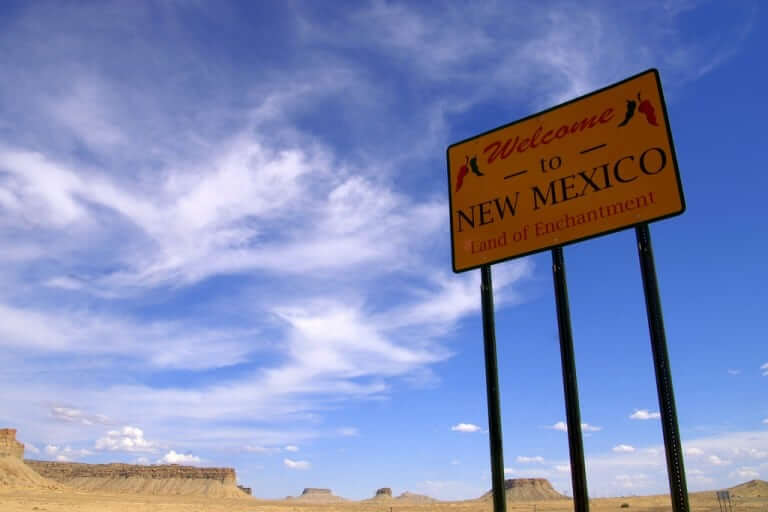
5) Experience the Santa Fe National Forest Scenic Byway and Enchanted Circle for World-Class Driving
Whether you’re taking a Sunday drive or doing some hiking, the Santa Fe National Forest Scenic Byway originates in downtown Santa Fe’s Palace of the Governors (which is the oldest public building in America) and takes you 15 miles through ponderosa, spruce, fir, and aspen-filled terrain in the Santa Fe National Forest. The road comes to an end at the Santa Fe Ski Basin, where you can tackle some runs in the winter or go mountain biking in the summer.
Meanwhile, the Enchanted Circle takes you on a drive through the outskirts of Santa Fe, taking you around the mountains and making it easy to feel lost in the wilderness. The Enchanted Circle drive is particularly popular (and beautiful) on a sunny winter day when the sun is sparkling off the white snow.
6) We’re Rich with History
Santa Fe’s history goes back much farther than the United States. Centuries before America was a country, the region was populated by dozens of Native American villages. The Pueblo people trace their history in the region as far back as 900, when they built a village called Ogapoge in what is now downtown Santa Fe. They settled in the Santa Fe area for its easy access to the Santa Fe River. That village extended for half a mile around and was centered on the modern Santa Fe Plaza.
The modern city of Santa Fe was officially founded when Spanish settlers arrived in the region in the 1600s, naming the city “Holy Faith” in Spanish. In 1610, Santa Fe was chosen as the capital of the Spanish province of Santa Fe de Nuevo Mexico in New Spain, and it has remained the capital almost consistently since.
Santa Fe also played a part in the Republic of Texas’s history, as Santa Fe was claimed as part of the western portion of Texas after it seceded from Mexico in 1836.
Many people are also surprised to learn that Santa Fe was involved in the American Civil War. As part of the New Mexico Campaign of that war, a Confederate flag was flown over the Santa Fe capitol building for a few days in March 1862.
[headquarters of the Manhattan Project was a small adobe hacienda on East Palace Ave, just a block off the plaza. This was the clandestine office of the famous A-bomb project credited with ending WWII, in which the world’s preeminent physicists and engineers of the day were secretly sent to create the ultimate weapon. Today’s Los Alamos National Laboratory located in the mountain town of Los Alamos (45 minutes from Santa Fe) is the legacy of that project.]
Today, Santa Fe retains its title as the oldest state capital city in the United States. Signs of this history can be found all around town.
7) Don’t Forget You’re in a Desert
Santa Fe may be an outdoor mecca filled with skiing, hiking, biking, and cultural opportunities, but we’re still a desert. Don’t forget that!
If you’re new to the region, expect to encounter dry, flaky skin – especially in the bone dry winter months. You’re going to need lots of moisturizer and conditioner.
In the summer, don’t forget to lather up with sunscreen. At this altitude, it doesn’t take more than 20 or 30 minutes to get a noticeable burn under the bright New Mexico sun. Sunscreen isn’t something you “probably should wear” in Santa Fe: it’s something you need to wear.
8) You’re Only an Hour Away from Albuquerque
Albuquerque, with a population of about half a million people, is just an hour down the road from Santa Fe. So you’re never too far away from big city amenities.
Santa Fe does have its own airport (SAF), but you can often get better deals (and more international flights) out of Albuquerque. No matter why you need to visit the big city, there’s a reason why many Santa Feans have pretty much memorized the I-25 down to Albuquerque.
9) We Have Some of the Best Food in America
Whether you’re interested in some of the best burritos you’ll ever eat or you’d rather sit down at a charming local café, Santa Fe is famous for its food. Like most touristy towns, there’s a blend of popular restaurants and local hangouts, but you have plenty of places to eat no matter what you’re looking for.
Our city is also famous for its farmer’s market, including the Santa Fe Farmer’s Market (recently named as one of the top 10 in the nation), which operates year-round and provides locals with fresh food from over 150 active vendors.
Ready to settle in Santa Fe? Build your dream home in Santa Fe, New Mexico with the help of the award-winning homebuilders, designers, and contractors at Palo Santo Designs.




